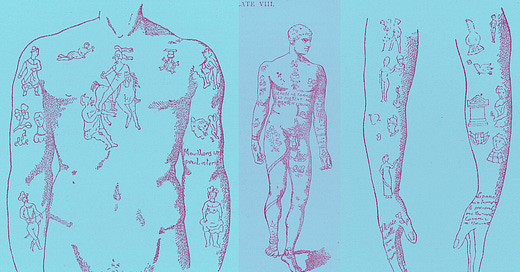Criminal ancestry: The secret art of using tattoos to investigate your family history
Victorian prison registers offer rare clues for family historians about the lives and loves of their criminal ancestors
Before the advent of forensic science, police officers in Victorian Manchester only had two foolproof ways of identifying arrested criminals.
The first was to see if their captive had any tattoos on their bodies — the second was to check if they had any missing fingers.
In a city where men and women spent their whole lives operating power looms, losing a finger was a daily hazard.
It explains why Victorian rogues’ photo books show the prisoners with their hands spread out across their chests — to indicate if they had any missing digits.
The second method of identification was to ask their captive to take off their shirt and examine the inked markings on their torso and arms.
Keep reading with a 7-day free trial
Subscribe to Manchester History Club to keep reading this post and get 7 days of free access to the full post archives.




